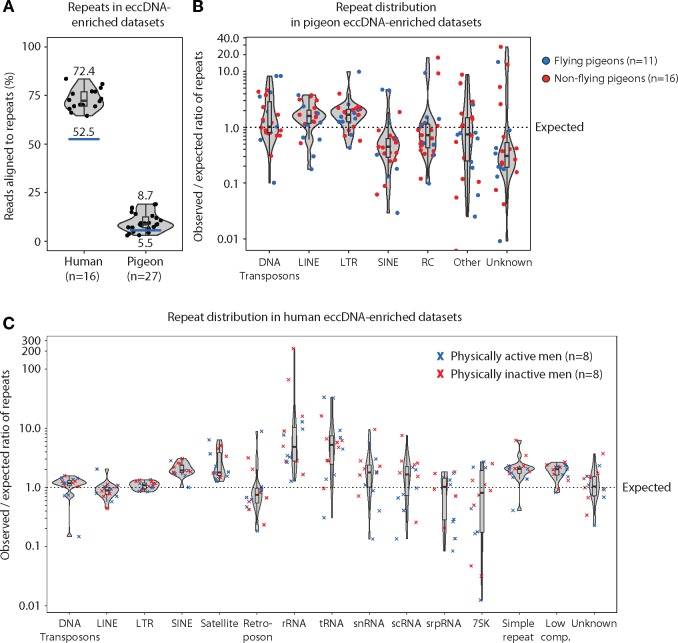Fig. 3.
—Repetitive elements in eccDNA-enriched data sets from human and pigeon muscles. (A) Violin plot of observed percent repeats in human (median 72.4, n = 16) and pigeon (median 8.7, n = 27) eccDNA-enriched data sets relative to expected repeat percentage of the genome (blue line). (B) Violin plots of pigeon eccDNA data sets (n = 27), displaying observed per expected ratio of different repeat-class sequences in flying (blue) and nonflying (red) pigeons. (C) Violin plots of human eccDNA data sets in physically active middle-aged men (blue) (n = 8) and in physically inactive middle-aged men (red) corresponding to the two groups of birds, flying and nonflying, in (B). DNA transposon, DNA; long interspersed nuclear element, LINE; long terminal repeat, LTR; short interspersed nuclear element, SINE; rolling-circle helitron, RC; and different ribonucleic acid (RNA) repeats classes from ribosomal (rRNA), transport (tRNA), small nuclear (snRNA), small conditional (scRNA), signal recognition particle (srpRNA), and other or unknown categorized repeat features.

